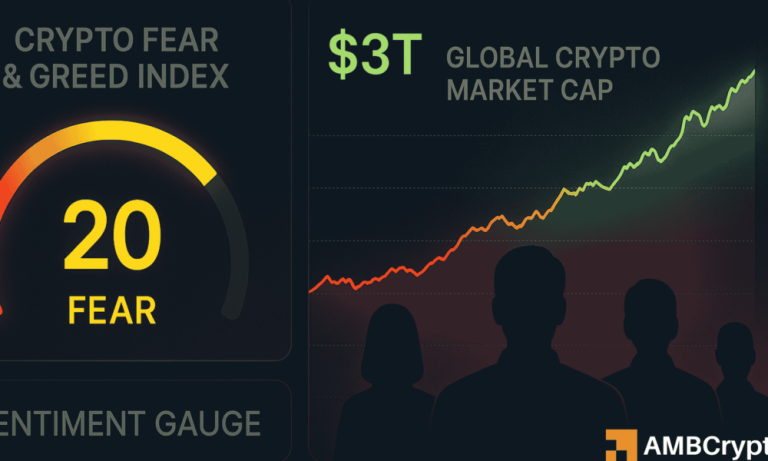
The US Job Market is in Crisis: What Does it Mean for Crypto?
The weakening US job market has raised alarms as we approach the end of the year, sending ripples across various sectors, including cryptocurrencies. Rising layoffs, slowing hiring, and declining consumer confidence have intensified speculation over the Federal Reserve’s potential rate cuts, fundamentally affecting the volatile crypto market.
Job Market Signals: What’s Happening?
October 2025 marked a critical point in US labor statistics, with layoff announcements soaring to their highest levels since 2003. Data from MacroEdge indicated that US job cuts reached 154,559 in October, up 70,609 month-over-month, making it the fifth time in the year monthly layoffs exceeded the 100,000 mark. Contributing factors include corporate restructuring due to artificial intelligence, tariff costs, and economic uncertainty following government shutdowns.
Despite these indicators, weekly jobless claims have remained low, creating a mixed picture. Markets have interpreted this as a sign of economic softening rather than an outright collapse. Traders are now pricing in a 25-basis-point rate cut for the Federal Reserve’s December meeting—a shift from their prior “higher for longer” stance on interest rates.
How Crypto is Reacting to Economic Signals
The cryptocurrency market remains exceptionally sensitive to macroeconomic changes. Bitcoin, Ethereum, and other major digital assets are currently navigating fragile liquidity conditions. The October 2025 crypto crash, driven by a sharp liquidation shock, left market makers reducing risk exposure, eroding order book depth. This thin liquidity increases the magnitude of price movements tied to shifts in economic policy.
For instance, following the Fed’s expected dovish stance, crypto assets historically show a positive trajectory. Metrics signal cautious optimism:
- The Crypto Fear and Greed Index moved up from 11 to 22.
- Bitcoin’s RSI (Relative Strength Index) is heading toward 60 after bottoming out at oversold levels.
- Momentum indicators such as MACD have turned positive.
However, challenges remain. ETF outflow data from November shows inconsistencies, with heavy outflows in earlier weeks only partially offset by recent inflows.
Could December Bring a Crypto Surge?
If the Federal Reserve cuts rates, the move could inject liquidity into risk-driven assets, benefiting cryptocurrencies. Combined with improved on-chain metrics indicating reduced selling pressure, Bitcoin and Ethereum could see significant price recoveries. December could mirror historical “Santa Rally” trends, where markets experience seasonal upswings following distress periods.
For those looking to complement their crypto investing with reliable market insights, the Ledger Nano X hardware wallet is a must-have for securely managing your crypto portfolio. Protect your digital assets during volatile market conditions.
January 2026 and Beyond: Why Volatility Will Persist
Even if December ushers in a short rally, January presents significant risks. The combined labor market reports for October and November, set for release on December 16, could validate deeper concerns about economic weakness. If layoffs accelerate into January, risk assets like cryptocurrencies may experience sell-offs, particularly given their vulnerability to liquidity constraints.
Positioning for the Future
The Federal Reserve’s decisions, combined with evolving labor data, will dictate the direction of crypto prices into early 2026. Investors should remain vigilant and adopt strategies that account for heightened market volatility. Utilizing tools like on-chain analytics and secure storage solutions can help navigate the turbulent waters of the crypto market.
As we move forward, the most critical variable remains how the Federal Reserve balances labor market pressures with the need to steer the economy away from broader risks. Stay tuned for developments that could shape financial markets—and your crypto portfolio—in the coming months.



